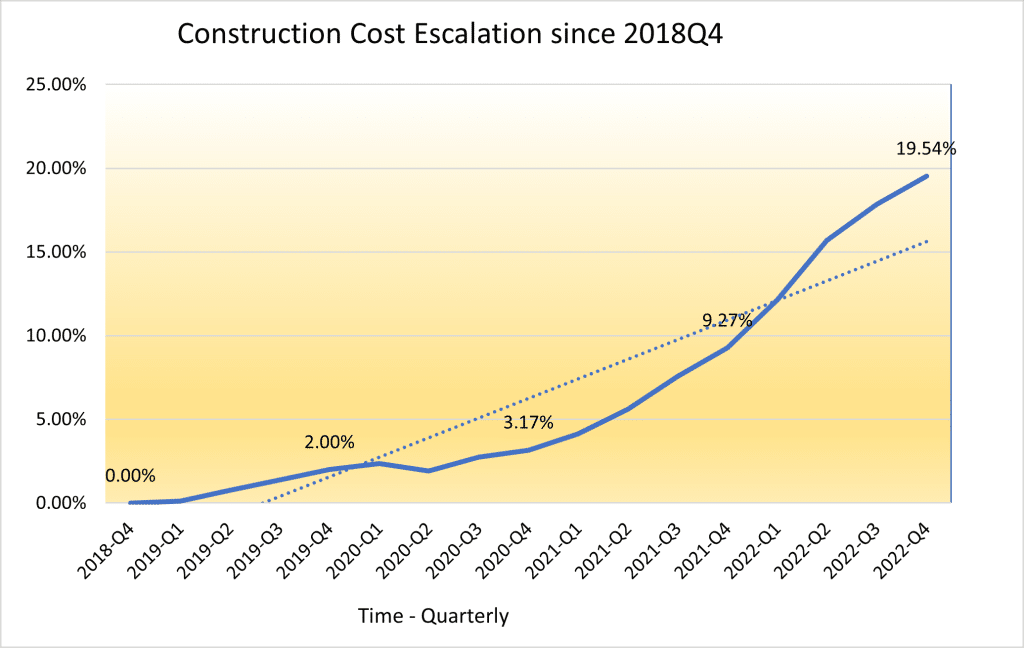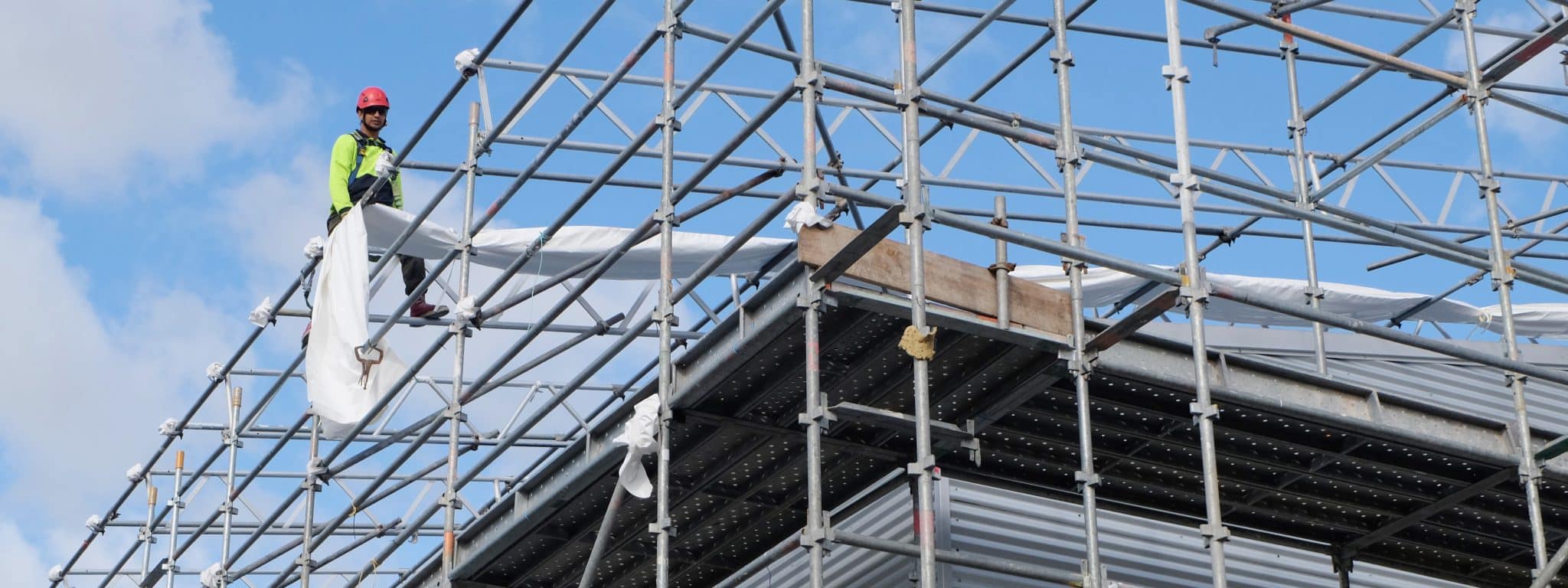Registered Quantity Surveyor, Asela Premaratne explains construction sector cost escalation in recent years.
Construction costs in New Zealand have been rising for the past few years, with economic growth increasing demand for housing and infrastructure around the country. The construction industry contributed $18.1 billion to the gross domestic product in the year ended March 2022. The industry is expected to grow further and with more construction projects anticipated, a significant rise in the cost of materials and labour is a major concern for construction companies, developers and homeowners alike.
Various factors have resulted in cost escalation in the New Zealand construction industry. These include labour and material supply shortages, compliance with health and safety and environmental regulations, changes in the market such as increased cost of transport, freight, and the effects of Covid on world markets.
Construction companies may have to pass on these increased costs to their clients, resulting in higher prices for the end product. Not knowing the final cost of a building project can strain budgets and affect the viability of projects. Rising costs can lead to delays in completion as construction companies struggle with increased pricing and demands on resources.
Industry resources revealed significant cost increases in recent years, and tenders received for various projects reflect the same. Most sub-trades prices have gone up by 7-20%, and steel and metal prices have increased over 15%, noting that the increasing percentage depends on the material types, location and further factors that impact on supply costs.
In our experience, the residential sector has seen a considerable cost increase, as contractors tend to increase tender costs by adding a premium to mitigate their financial risk from market uncertainty.
Just how much have construction costs escalated in recent years?
We have examined how the cost fluctuation formula indicates an escalation in the construction sector over recent years. The graphic analysis below of construction cost fluctuation figures are based on the formula method provided in NZS3910:2013 construction contract.

The construction sector cost increased just over 10% from 2021-Q4 to 2022-Q4. This differs from what was normal in previous years in the market, which was stable at between 3% and 7% annual increases and evidenced from the tenders received in recent years.
The calculations are generally based on 40% (labour) to 60% (material) of the cost for a building element, using the indices for the construction sector as published by Stats NZ. The tendency of percentage hiking shows that construction cost increases will continue to happen, and that escalation drifted in 2022 in the post Covid environment.
The construction industry faces ongoing risks related to ever-evolving pandemic issues and now economic slowdown with wider global challenges. How cost escalation affects the construction industry in future, and what steps can be taken to mitigate the impact, is key to finding realistic solutions.
Managing increased costs in ongoing construction projects with no cost escalation provision
There could be construction projects running longer due to delays, and where tenders were received on a lump sum fixed-priced basis. If the client forces the contractor to continue incurring further loss, this could escalate to a contractual dispute leading to suspension, or even contract termination. Such action will further impact on the client’s project budget and timeline.
Instead, consider bringing the cost escalation claims to the table and negotiate to compensate the contractor fairly and reasonably, aiming for the project completion rather than a project put on hold. In a situation like this, the consequences of a dispute would not be in the best interest of the client.
How to mitigate financial risk for new projects moving forward
Construction costs in New Zealand were somewhat steady in the past, before the Covid pandemic, and the contractor’s risk was low. Most construction works were executed on the basis of lump sum fixed prices, and contractors were able to accept the risk of manageable cost escalation.
With recent market changes, greater concerns of inflation and wider issues such as supply chains, the industry needs to change from traditional pricing models and utilise provisions in construction contracts to compensate for cost escalation. There are a few options available to assess and account for such inflationary impacts, which compensate the contractor and provide a level of certainty for the client.
Cost escalation clauses in construction contracts provide an open and transparent mechanism to deal with escalation. Clients may also gain benefits when prices decrease and cost fluctuation provisions in the contract could result in a lowered tender price.
Consider cost escalation for specific sub-trades
There could be some sub-trades, such as steel and carpentry, for which contractors could not offer lump sum fixed prices in current market conditions. In this case, cost escalation can be considered for specific sub-trades, with agreement to compensate on a proven cost basis, together with peer review by a Quantity Surveyor of the costs claimed.
Using this option in the procurement stage, for specific trades that the contractor may not be able to secure a fixed price for, may provide an acceptable solution. The client could still receive a competitive fixed price for a portion of the contract, which would also create an opportunity to mitigate the financial risk to a certain extent.
Other ways to mitigate construction cost escalation
- Implementing an open book contract mechanism with a preferred contractor allows for transparency on the project cost.
- A client-held contingency is vital to manage the increased material cost due to escalation, whilst labour rates are negotiated and fixed for the project duration.
- Early procurement, increased storage facilities and options for offsite and onsite payments for materials can help contractors manage cost escalation risks to a greater extent.
- More realistic construction period timelines should be agreed upon, considering the current supply chain issues and challenges.
- A reasonable contingency fund can be included for cost escalation in initial cost estimates until the contract signing stage, to ensure the client maintains sufficient budget for the project from the early stages.
It is undoubtedly a difficult time for the whole industry until it recovers from the recent volatility. From the contractor’s point of view, this is a challenging time for them to run a profitable business. From the client’s perspective, this is a difficult time for managing project funding and financing. Quantity Surveyors, as cost specialists, can provide recommendations for informed decisions for managing financial risk associated with cost escalations and in many aspects of ongoing and future construction projects.
References:
Stats NZ – construction sector indices
NZS3910:2013, cost fluctuation formula
For further professional advice, please feel free to contact us on prendos@prendos.co.nz, or click here, and we would be happy to assist where possible.

